| Home | Chapter History | National Info | Chapter Info | CINDERS Newsletter | Our FP7A | Transportation Links | Railfan Links |
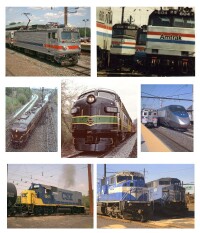 |
The Philadelphia Chapter of the National Railway Historical Society Established in 1936
|
|||||||
Histories of local railroad operations
![]() The PATCO Hi-Speedline
The PATCO Hi-Speedline
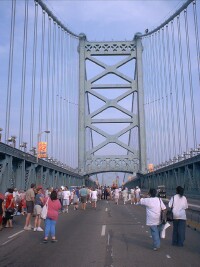 |
On July 1, 1926 the Delaware River Bridge (renamed the Benjamin Franklin Bridge in 1955) was opened to the public between Philadelphia, Pennsylvania and Camden, New Jersey. The bridge was constructed by the Delaware River Bridge Commission with provisions for rail access to be completed at a later date. In addition to the outboard structures designed to accommodate a rapid transit track on either side of the bridge, two of the eight lanes on the deck were intended for use by Public Service-Camden system streetcars, but that idea was abandoned by 1932 in favor of buses, and the trolley stations built into the four anchorages of the bridge in anticipation of trolley service were never used. Due to increasing traffic volumes, there was even a suggestion to use the outboard structures for vehicular traffic. But despite the Great Depression, construction of the high speed line began in 1932 under the authority of the Delaware River Joint Commission. | |
|
|
The new Bridge Line service, operated by Philadelphia Rapid Transit (PRT), was finally inaugurated on June 7, 1936. There were only four stations, serving Philadelphia at Franklin Square and 8th Street and Camden at City Hall and Broadway at . The 26 cars that were built by the J.G. Brill Company for the line, known for their deep cushioned bucket seats, were interchangeable with those on the Broad Street Subway (eventually most were purchased in 1968 by the City of Philadelphia for use there) and serviced at that line's Fern Rock maintenance shop. Originally the Bridge Line ended at the Broadway PRR/PRSL Station in downtown Camden and 8th Street Broad-Ridge Subway station in Philadelphia, but soon after opening service was extended to Girard Avenue via the Broad Street Subway’s Ridge Avenue Spur. | |
| In 1940, Philadelphia Transit Company (PTC), successor to PRT, took over operations of the Bridge Line. A study by the DRJC in 1948 recommended the creation of a regional port authority and the construction of a high speed commuter rail line. On July 17, 1951 President Truman created the Delaware River Port Authority and soon afterward the DRPA began to study the options for the construction of a more extensive rail transit line to serve South Jersey. | ||
| In 1953, PTC-owned stations at 10th Street, 12th Street and 16th Street in Philadelphia were added to the Bridge Line by using the never finished Locust Street Subway, but the studies into the DRPA expansion in South Jersey were still ongoing. Planning began in earnest in the 1960’s. One study was designed around a tunnel beneath the river and three separate branches to serve Moorestown, Kirkwood (Lindenwold), and Woodbury Heights. This was an expensive solution, estimated at costing almost $250 million. Instead, the DRPA selected the design costing $94 million that used the existing rail line on the Benjamin Franklin Bridge and subway connections to Philadelphia instead of building a new tunnel, and a single line along the route with the highest possible ridership, to Ashland, and later Kirkwood (Lindenwold). | ||
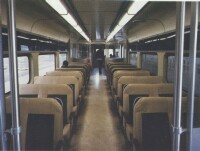 |
Construction began on June 11, 1964. On September 7, 1967, the DRPA created a subsidiary to run the new line, the Port Authority Transit Company, or PATCO. The first trains ran on the line on January 4, 1969 and the first revenue trip from Lindenwold, New Jersey to Center City Philadelphia on the newly renamed PATCO Hi-Speedline was on February 15, 1969. Seven stations had been added to the line in Camden County, and six of them were designed as Park and Ride stations, a first. Eventually the line also became the first in the United States to use a full ATC system, relying on cab signals, and was the first to use an automated fare card system, and to be computer monitored. | |
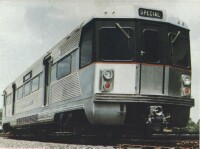 |
New cars were procured for the Hi-Speedline. Constructed of stainless steel, they were built by the Budd Company at their Red Lion Plant in Northeast Philadelphia, just across the river. The 75 automated cars were designed to operate with a single train operator, seat between 72 and 80 passengers and travel at speeds of up to 75 miles per hour. They also featured modern air conditioning, heating systems and cushioned seats. In 1980, the total number of cars rose to 121 with the addition of 46 new cars built by Vickers Canada under license from Budd. | |
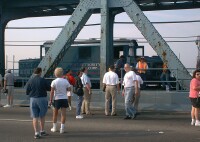 |
After the closing of the only DRPA-owned station in Philadelphia, Franklin Square station in 1979, the addition of Woodcrest Station in 1980 brought the total to the current 13. On July 1, 2001, the 75th anniversary of the opening of the bridge, the DRPA held an open house, allowing pedestrian only traffic on the bridge deck, conducting tours of the never used trolley stations, displaying a Bridge car and one of its rarely seen former Niagara Junction electric MOW engines, and unveiling, for the first public showing in more than 50 years, the restored "Winged Victory" statues that are planned to adorn the long delayed Delaware River Aerial Tram terminals. In July of 2009 PATCO announced it will reopen the Franklin Square Station, possibly within two years. | |
 |
The PATCO Hi-Speedline has one of the best safety records in the industry, and is the only line in the area with automated toll collection. In 1998 it also became the first public transit system in the country to comply with the Americans with Disabilities Act. The line connects with the Broad Street Subway (Walnut-Locust) at 12th and 16th Streets, with the Broad-Ridge Spur and Market-Frankford Line at 8th Street, with the New Jersey Transit rail line from Atlantic City to Philadelphia at Lindenwold, and will connect with the new South Jersey Light rail line from Camden to Trenton at the Walter Rand Camden Transportation Center (built on top of the PATCO Broadway Station). | |
| Copyright © 2002 John P. Almeida |
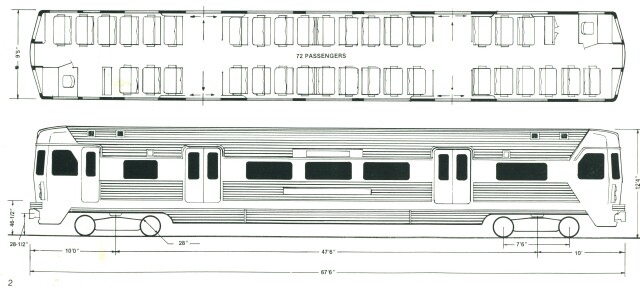
| Sources | ||
| PATCO | ||
| DRPA | ||
| NYC Subway.org | ||
| PhillyRoads.com | ||
|
|
Direct website questions or comments to phillynrhs webmaster
Website created June 12, 2002
Last Updated July 16, 2009